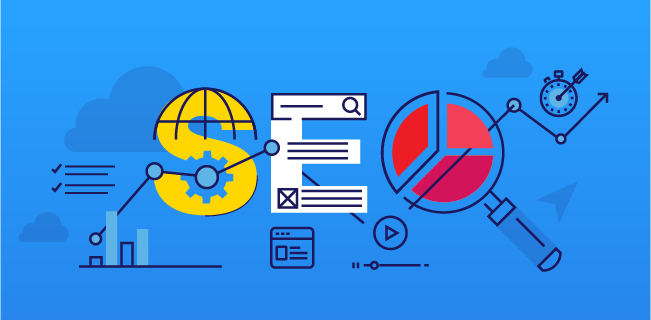Debunking What Is Ruled Out a Default Medium in Google Analytics
Debunking What Is Ruled Out a Default Medium in Google Analytics
Blog Article
Assuming Outside the Box: Leveraging Unconventional Mediums to Optimize Google Analytics Performance
In the world of electronic marketing, the mission for boosted Google Analytics efficiency has become a tactical important for services seeking to refine their on-line existence. Typical methods often fall short in recording the complete spectrum of customer interactions and habits. By checking out unconventional tools as opportunities of information collection, a new world of opportunities arises. These undiscovered areas supply a wealth of untapped insights that can potentially transform the method we comprehend and enhance our electronic approaches.
Distinct Information Sources

CRM systems, as an example, can supply understandings right into individual customer communications, purchase background, and choices, which can be integrated with Google Analytics information to produce even more tailored advertising and marketing methods. Social media site platforms provide important information on individual demographics, passions, and engagement metrics, enabling services to assess the performance of their social networks campaigns and maximize material for better performance. Email advertising and marketing data, consisting of open prices, click-through rates, and conversion metrics, can likewise be leveraged to track user interaction and habits past internet site interactions captured by Google Analytics. By leveraging these one-of-a-kind information resources, companies can fine-tune their techniques, enhance targeting efforts, and improve overall Google Analytics performance.
Social Network Insights

Additionally, social media analytics devices allow organizations to track key efficiency signs, display campaign performance, and determine the influence of their on the internet tasks. Comprehending the demographics of fans, identifying popular content styles, and examining interaction degrees can help organizations tailor their advertising and marketing techniques for far better results.
Offline Marketing Assimilation
Integrating offline advertising and marketing strategies with electronic analytics can improve overall campaign efficiency and why not look here provide a much more comprehensive understanding of customer actions. what is not considered a default medium in google analytics. By bridging the void between online and offline initiatives, companies can track the influence of traditional advertising and marketing channels such as print ads, TV commercials, direct-mail advertising, and occasions on their online existence

Furthermore, implementing phone call radar for offline advertising activities enables businesses to record valuable data on consumer questions produced with printed materials or promotions (what is not considered a default medium in google analytics). By examining telephone call data along with on the internet metrics in Google Analytics, organizations can get deeper understandings into the consumer trip and optimize advertising and marketing methods for improved performance across all networks
IoT and Wearable Technology
Making use of IoT and wearable innovation in electronic analytics can change data collection and customer insights for organizations seeking a deeper understanding of user habits patterns. Wearable go to this web-site modern technology, such as smartwatches or health and fitness trackers, can offer insights into customer tasks, health metrics, and even place data.
Gamification Methods
The execution of gamification strategies in digital analytics presents an innovative approach to the original source enhancing user interaction and driving actionable understandings for businesses. By integrating game-like aspects such as factors, badges, leaderboards, and compensates right into the analytics interface, firms can motivate individuals to interact more frequently and meaningfully with the data.
Gamification motivates users to check out various functions of the analytics system, uncovering valuable insights that may have or else gone undetected. With interactive difficulties and progression monitoring, customers are incentivized to dive deeper into the information, leading to increased time spent on the system and a greater likelihood of discovering vital fads or patterns.
In addition, gamification can promote a sense of competition amongst customers, spurring them to pursue higher efficiency and interaction levels. This affordable spirit can drive raised user adoption prices and an extra extensive utilization of the analytics devices available. Inevitably, by leveraging gamification methods in electronic analytics, organizations can develop an extra productive and engaging environment for individuals, resulting in even more enlightened decision-making and boosted general performance.
Conclusion
In final thought, leveraging unusual mediums such as distinct information resources, social media insights, offline marketing assimilation, IoT and wearable innovation, and gamification approaches can enhance Google Analytics efficiency. By thinking outside the box and checking out these alternative resources of data, services can gain beneficial insights and boost their overall advertising approaches. It is essential for firms to continually explore new methods to gather information and examine it in order to stay in advance in the ever-evolving digital landscape.
By integrating information from resources such as consumer relationship administration (CRM) systems, social media systems, and e-mail marketing campaigns, companies can get a more extensive understanding of their audience habits and interaction patterns. Social media platforms offer beneficial information on customer demographics, passions, and engagement metrics, allowing companies to evaluate the performance of their social media campaigns and enhance content for better efficiency. By leveraging these distinct data sources, companies can refine their strategies, improve targeting efforts, and improve general Google Analytics performance.
Exploring social media insights can provide businesses with valuable information on customer demographics, rate of interests, and involvement metrics, allowing for educated decision-making and calculated optimization of advertising efforts. By believing outside the box and checking out these alternative resources of information, companies can acquire useful insights and boost their general marketing strategies.
Report this page